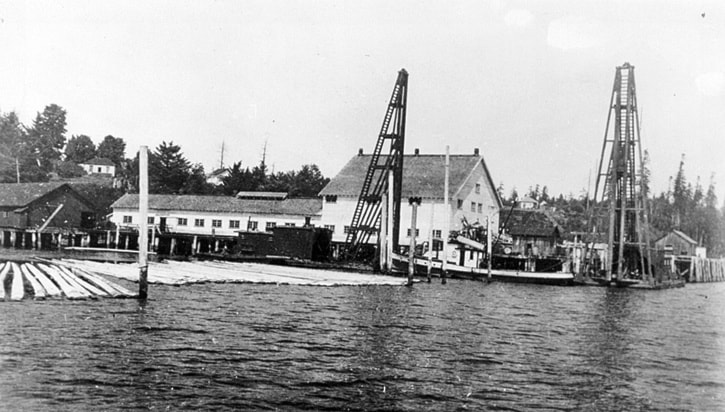Many of us have celebrated the rains that raised the water in the rivers, allowing the homecoming salmon to flap, twist, and thrash their way frantically to reach the higher levels, instinctively searching for beds to spawn.
The ritual that takes place each fall is attracting viewers to the banks of turbulent creeks and rivers to watch the salmon and perhaps as well catch glimpses of the bears that have been gathering for their annual feast to fatten up for winter.
Soon the eagles and seagulls will follow for the pickings. A residue of rotting carcasses, their odour permeating the scene, will gradually recede again as the organic materials are absorbed by nature to provide nutrients for the following generations.
Engrossed as we are in this cycle, and aware of the importance of the salmon to First Nations, to sports anglers, to charter fishermen and commercial fishermen, many readers may be unaware of another facet – the local salmon canning industry.
The waterfront photo shows the scene at the foot of Maple Avenue in 1919, with the cannery building of Sooke Harbour Canning Company framed by pile drivers. The assembly system processed the salmon into cans and utilized pressurized steam for cooking.
An earlier cannery building stood at the foot of Murray Road in 1904, established by J. H. Todd & Sons, the industry magnate that initiated the fishtraps operations on this coast. When a Port Townsend group of fishtraps entrepreneurs moved to Sooke in 1918 to tap into the prolific runs coming down the Strait, it took but a few years before the two business giants joined together to form Sooke Harbour Fishing and Packing Company.
It was this conglomerate that continued the annual placing of the fishtraps and the lifts into the packers until declining salmon runs determined the traps’ closure in 1958. Economics had dictated moving the cannery into Esquimalt years earlier, and the Empire Cannery that stood at the end of Halliwell Road was one of the destinations for salmon lifted from the traps by the Sooke operations.
Though using a different process nowadays, Sooke for the past two decades has had a fish-processing plant that is also classed by government regulation as a cannery. Through a thermal processing method, pouches of salmon are produced here on Goodridge Road, for shipping anywhere in the world.
Elida Peers,
Historian
Sooke Region Museum
